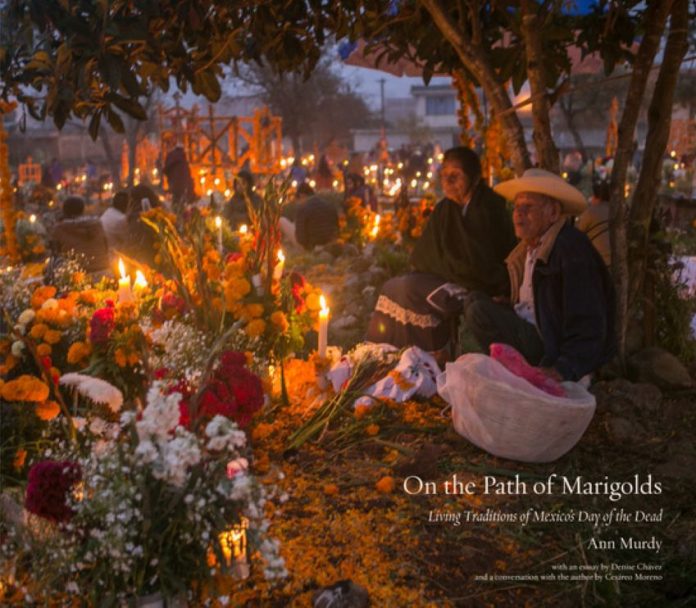For almost 30 years, United States-based photographer Ann Murdy has been visually documenting the Day of the Dead across Mexico. Now, her new book on the holiday is attracting worldwide acclaim.
On the Path of Marigolds: Living Traditions of Mexico’s Day of the Dead shares 90 of Murdy’s photographs from three rural areas — Huaquechula, Puebla; Teotitlán del Valle, Oaxaca; and the communities around Lake Pátzcuaro, Michoacán. This summer, the book won a gold medal from the Foreword INDIES book competition. Last month, it received an honorable mention from the International Latino Book Awards in the best arts book category.
“I did not expect gold,” Murdy said. “I’m a first-time author. I’m not a famous photographer … In June, I went to the website of the INDIES awards. I scrolled down in the adult nonfiction multicultural [category]. I saw the silver and bronze [winners]. All of a sudden, I saw [I had won the] gold. Oh, my Lord, I was in shock.”
She was similarly surprised and pleased with the recognition from the Latino Book Awards, a competition for entrants across Europe, the United States and Latin America.
Over the decades, Murdy has grown increasingly familiar with the Day of the Dead holiday, which occurs from October 31 to November 2. Many of her book’s images reflect its traditions across Mexico, such as gathering at the graves of loved ones with food, drink and mariachi music.
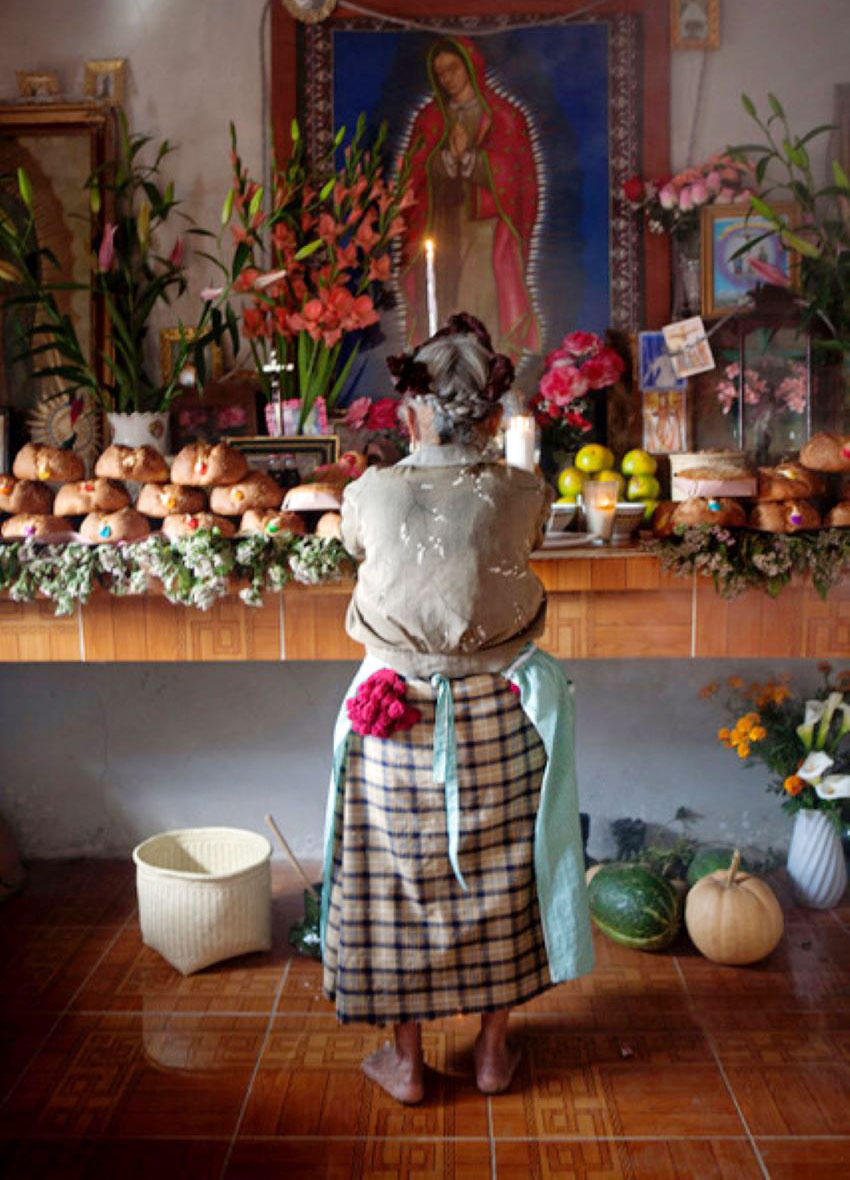
Each area of Mexico she documented is represented by 30 photos taken between 2009 and 2018. Not only did Murdy take photos in cemeteries, but she also captured more intimate commemorations at home altars, or ofrendas.
“They look very comfortable,” she said of her photos of home visits. “I did not pose anybody … The most important thing was respect.”
Murdy gave a virtual book talk on October 21 at the Santa Fe Public Library, in her hometown. It was so successful that she was to do an encore presentation on October 30. In her book talk last week, she called the Day of the Dead “one of the most beautiful experiences I’ve ever witnessed in my life.”
Overall, she explained, the holiday has “changed my perceptions of death and dying” and she hopes that the traditions depicted in her book will live on forever. She describes the book as an attempt to preserve those traditions in the wake of increasing commercialization of the holiday.
The Day of the Dead is becoming mixed with Halloween in Mexico as people masquerade as calaveras (skulls), witches, vampires and ghosts. In recent years, the holiday has been marketed with products such as a Barbie doll, a breakfast cereal and an Air Jordan sneaker.
Another perhaps more benign example relates to one of the communities around Lake Pátzcuaro that Murdy photographed — Santa Fe de la Laguna, which some call the inspiration for the village in the hit Disney film Coco.
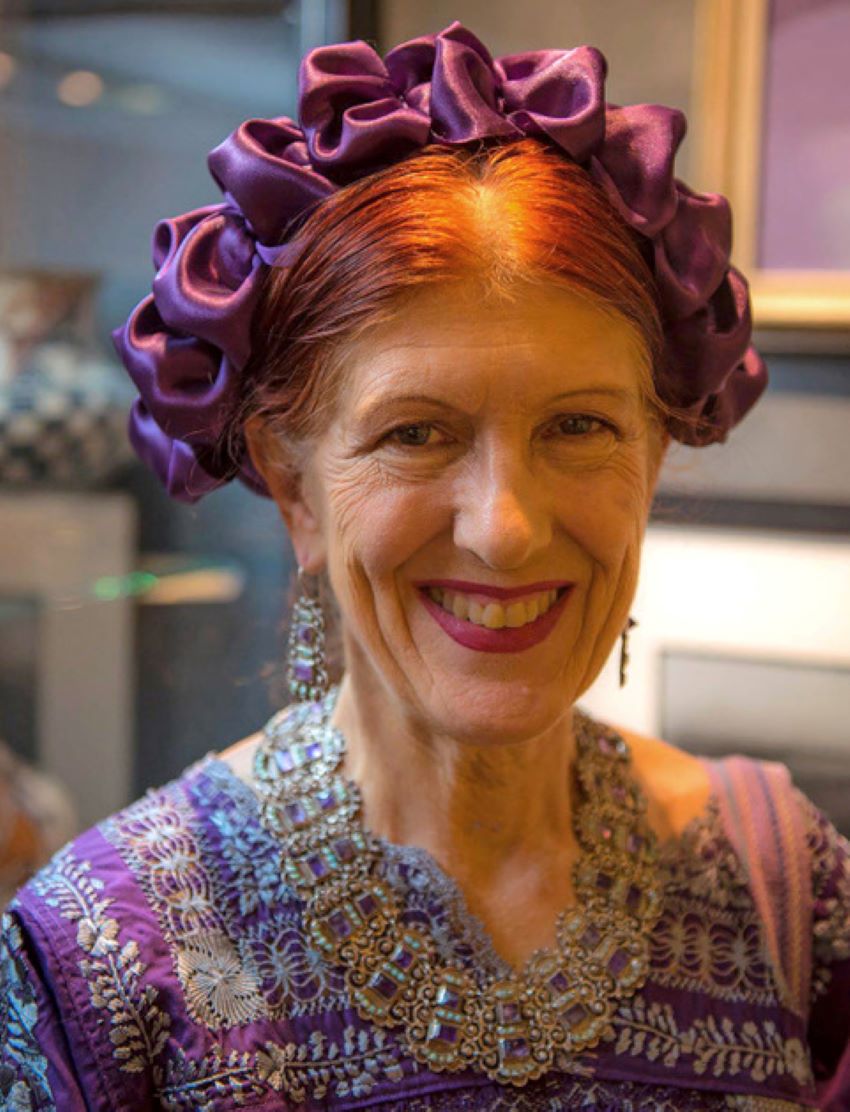
In the film, a boy named Miguel connects with his ancestors on Day of the Dead. His abuela, Mamá Coco, was reportedly inspired by a 107-year-old Santa Fe de la Laguna resident, María Salud Ramírez Caballero.
While Murdy enjoyed the movie, she is concerned about increasing numbers of tourists who wish to experience the holiday in Mexico, where many exhibit what she calls disrespectful behavior, such as taking selfies in cemeteries and at private homes.
By contrast, she said, “My book is a testament to traditions that are authentic in three rural communities in Mexico.”
Murdy is well-versed in documenting Mexican traditions. Over 2,000 of her photos are archived in the National Museum of Mexican Art in Chicago, the largest Mexican museum in the United States. An interview between Murdy and the museum’s chief curator, Cesáreo Moreno, is included in the book, as is an essay by Denise Chávez, a Mexican American writer.
During her time in Mexico, Murdy said she has learned how here the dead are remembered in a way both reflective and celebratory, in contrast to what she describes as the United States’ more tight-lipped approach.
“It’s a much more healthy way of looking at death and dying,” she said.
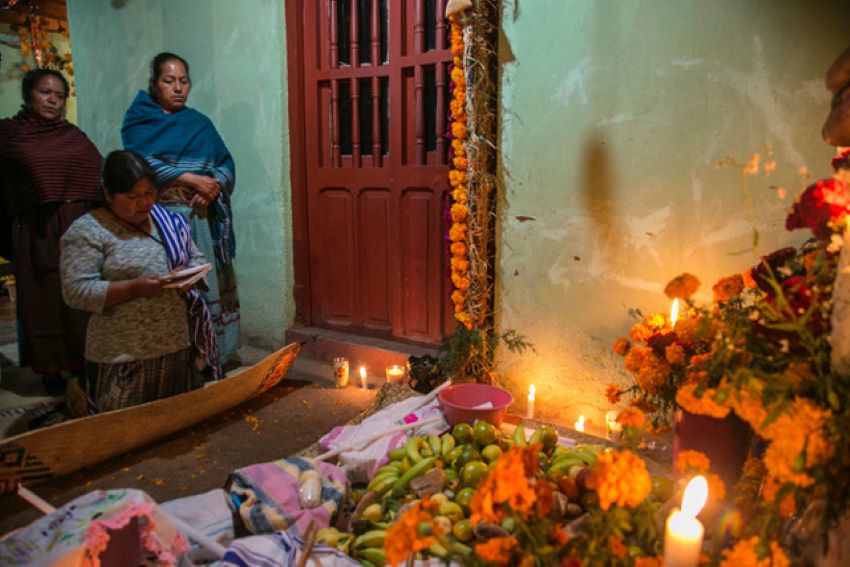
Murdy, from Orange County, California, had never heard of the Day of the Dead holiday growing up. Once she learned about it, she went to Mexico to witness this annual event and encountered compelling visual images: the deceased guided by candlelight on a marigold-strewn path from the cemetery to the ofrenda as mariachis play and copal incense burns, with plenty of mole, tamales, hot chocolate and mezcal put out for the dead who will return to visit their loved ones.
She started in 1991 with a visit to the main cemetery in the city of Oaxaca. A few years later, she visited the cemetery at night. Then she traveled southeast to Teotitlán del Valle, an indigenous Zapotec Oaxacan village and the first of the three communities she would draw upon for the book.
She recalled people there flooding the market on October 31 to buy flowers such as cresta de gallo and marigolds, also called flor de muertos or cempasúchil. She saw people buying various kinds of pan de muerto, as well as apples, oranges, jicama and cacao. Church bells rang and bottle rockets went off on November 1, with another round of fireworks the next day. In the cemetery, she heard not only mariachis but also rezadores, a cappella singers with what she described as a strong, piercing melody.
Walking from house to house to see home altars, she stopped in for pan de muerto and hot chocolate, although she declined the mezcal and beer. Sometimes people conversed in Zapotec, a language she does not speak. She was fascinated by the altars — which she described as completely different from those in the city of Oaxaca.
A holiday that came from Aztec festivals
She grew to understand the pre-Hispanic roots of the holiday. As she explained, it arose from two separate Aztec Day of the Dead harvest festivals. The first festival honored the “little dead,” children who had died during the ninth month of the Aztec calendar, known as Tlaxochimaco. It lasts from July 24 to August 12. The second festival was the great festival of the dead, which occurred in the tenth month of Huey Miccailhuitl, which lasts from August 13 to September 1.
When the Spanish conquered Mexico, they kept these rituals, with changes that helped pave the way for conversion to Catholicism.
“They saw the death rituals were very important to indigenous people,” she said. “They said, ‘Let’s keep the death rituals and switch them to All Saints’ Day, November 1, and All Souls’ Day, November 2.’”
Murdy continued exploring how the holiday is celebrated regionally, including in the Huaquechula and the Lake Pátzcuaro communities.
Ultimately, she visited nine lakeside communities, including Ihuatzio, where she took the photo that was chosen for the cover, and Santa Fe de la Laguna. Again, residents here sometimes conversed in an indigenous language, in this case Purépecha.
“I really prefer going to indigenous communities,” Murdy said. “I’ve been told that Purépecha beliefs were similar to the Aztecs’.”
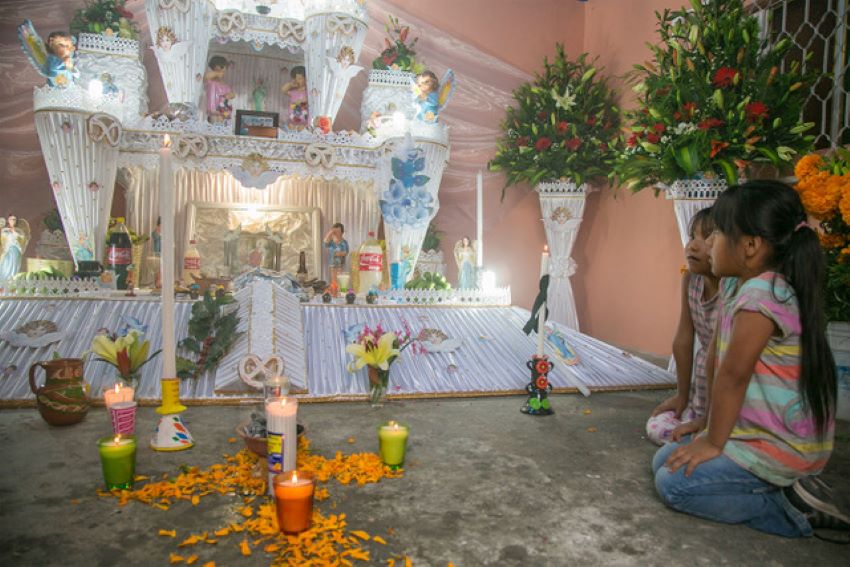
On October 30, people in lakeside communities prepare a box with four rectangular frames, filling it with food to represent the bounty of heaven. Hundreds of marigolds decorate bamboo arcos, or arches, and if it is the first year following an individual’s death, a straw mat is placed by his or her grave so that the soul can rest while journeying back to the Land of the Living.
In Huaquechula, Murdy also saw a unique way of honoring people in the first year after their death — the monumental altar.
This altar is an extensive, week-long undertaking to construct. Its three tiers represent birth, life and death, with each one separated by baroque columns. White satin folds represent the clouds of heaven. A photo of the deceased adorns the altar, as does a mirror and the deceased’s favorite foods.
“Most people have never seen monumental altars,” Murdy said. “I don’t know why the tourism department in Puebla doesn’t advertise them more.”
This year, it seems that few will get to see these altars, or other historic traditions featured in Murdy’s book. Due to the coronavirus, public Day of the Dead observances have been canceled throughout Mexico. It gives an unexpected, added significance to her book’s release.
“[Even] prior to the pandemic, the photographs had cultural value,” Murdy said. “I sort of think today, who knows what’s going to happen? It’s important to preserve them.”
Rich Tenorio is a frequent contributor to Mexico News Daily.
